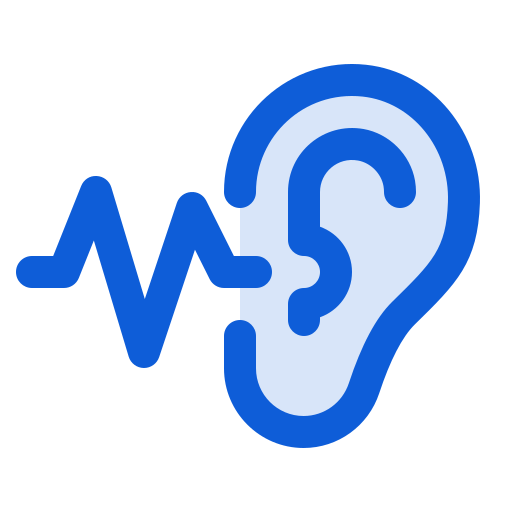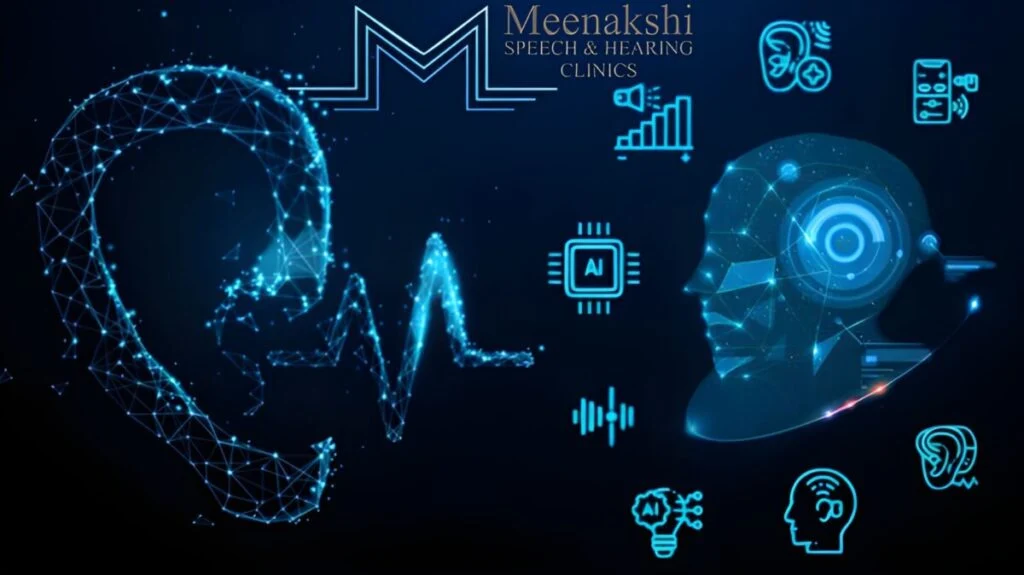Today’s hearing aid technology is more powerful and packed with advanced technology to make a world difference for hearing loss people. At Meenakshi Speech and Hearing Clinic, we share with you how modern Hearing Aids are charging us to live a better life. In this blog, we can understand hearing aids, the history of hearing aids, modern hearing aids, and digital hearing aid innovations.
What is a Hearing Aid?
A hearing aid is an electronic device that helps people with hearing loss by providing sound and making it easier to hear. Hearing aids come in various styles, customized for each person’s hearing aid needed and programmed or adjusted by the hearing care professional. Hearing aids are available in multiple types today, like In – the – Ear, Behind – the – Ear, In-the-canal, and Receiver-in-canal to suit different preferences. Modern hearing aid devices include advanced features just as Bluetooth connectivity, Noise reduction, directional microphones, and rechargeable batteries.
History of Hearing Aids
The hearing aid has come a long way from its humble beginning. Today, hearing aid devices come in more powerful and advanced technology. Let’s talk about the history of hearing aid devices and see how they change from year to year by their technology.
The first hearing loss remedies came in 1500 BC in the ancient Egyptian manuscripts.
Ancient Greeks and Romans also tried to hear loss with various concoctions and objects inserted into the ear canal.
13th Century: Animal Horns
In the 13th century, people used animal horns as rudimentary hearing aids. This funnel-shaped device couldn’t modify the amplified sound but helped direct it into the ear. They are not more effective and long-running.
17th Century: Ear trumpets
The first official hearing aid came in 1600 AD, known as the Ear Trumpet. These hearing aids work by funneling sound waves into the ear, much like the early animal horns. They came in different sounds, shapes, sizes, and materials, and this steps forward in the hearing aid.
18th and 19th centuries: Collapsible Ear Trumpets
In the 18th century, collapsible ear trumpets were hearing aids that were more comfortable and more portable. These devices are custom-made for individuals and have become more common.
In the 19th century, ear trumpet commercials were produced alongside hearing aids like hearing fans and speaking tubes. The composer of hearing aids Ludwig van Beethoven used custom ear trumpets, which are now displayed at the Beethoven Museum in Bonn, Germany.
20th Century: Electric Hearing Aids
In the 20th century, the invention of the carbon microphone occurred in 1878. The way for the electric hearing aid device in the early 20th century. This device helped them to amplify voices through a speaker held at the ear. They marked the beginning of modern hearing aid technology.
The development of vacuum-tube technology in the 20th century with the battery-powered hearing device that, while still heavy and small enough to be worn on the body, increased the amplification for better treatment of hearing loss.
1940: Transistor Hearing Aids
In the mid-20th, we saw the replacement of vacuum tubes with transistors. Its pocket size and lighter hearing aid. This device was more convenient and accessible.
1970 and 1980: Microprocessors and Digital Technology
The introduction of the microprocessor in the 1970s. Wearable analog devices have become common, but they amplify all sounds equally.
In 1982, First Fully Digital Hearing was created at the City University of New York, though it wouldn’t become commercially available until the 1990s. This is the foundation for the advanced digital hearing aid.
1990 to Present: Advanced Digital Hearing Aids
In 1996, the hearing aid officially went digital. Modern digital hearing aids are powerful and offer features like noise reduction, Bluetooth connectivity, and customizable settings. They provide clearer, more natural sound, significantly improving the quality of life for those with hearing loss.
Modern hearing aids: sleek and powerful
Modern hearing aids are more comfortable and come in various styles, including some that are virtually invisible. These devices make the sound louder, enhance the sound clarity, and adapt to different listing environments, ensuring you hear clearly in noisy areas like restaurants, traffic places, etc…
Digital Hearing Aid Innovations
Digital hearing aids come packed with features that significantly improve the user experience:
Digital Signal Processing
Digital signal processing converts analog sound waves (natural sound) into digital signals (numerical data) and modifies audio to enhance the user’s hearing experience.
Noise Reduction Technology
Modern hearing aids reduce unwanted sound or background noise to hear properly. It uses advanced algorithms to distinguish between speech and noise and focuses on speech.
Bluetooth Connectivity
Modern hearing aids provide Bluetooth connectivity, which is connected wirelessly to devices like smartphones, TVs, and other devices. This feature allows users to stream audio to their hearing aid to enjoy the sound and integrate it into daily activities.
Artificial intelligence
Some Premium Hearing Aid comes with an Artificial Intelligence(AI) feature that allows them to access deep neural networks to process sound. By logging the program of volume control setting, it automatically detects the environmental changes on its way.
Rechargeability
Many modern hearing aids now come with rechargeable batteries. Instead of constantly charging batteries, it also helps to run longer periods. This feature adds convenience and reduces environmental impact.
Customisable Settings
Modern hearing aids can be personalized through the smartphone app, which allows customers to adjust the sound setting and volume according to their specific needs.
Impact on Quality of Life:
The impact of this technology goes beyond better hearing. By providing clearer, more natural sound, modern hearing aids can also help improve relationships and boost social interactions. Better hearing also supports cognitive function and mental well-being, assisting individuals to stay engaged and active daily.
Conclusion
The latest innovation in hearing aid technology is transforming how we experience sound. The features of noise reduction, Bluetooth connectivity, customisable settings, and recharge ability batteries, are to improve your hearing problem and overall quality of life. Also, explore the latest technology in hearing aids day by day to make the future better.
Meenakshi Speech and Hearing Clinic will help you take advantage of these innovations and improve your quality of life.
Contact us today to learn more about our advanced hearing solution and start your journey to better hearing.


